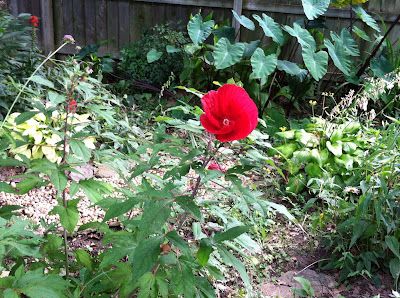The neighbor down the street swears by the Supertunia 'Bubblegum Vista'. So this year, I tried that one, even though the pink color clashed a little with the brick on our house. He told me that one plant would cover a large area so I planted less densely than I otherwise would have. Here is a single 'Bubblegum Vista' in our mailbox bed.
 |
| Supertunia 'Bubblegum Vista' |
This bed has only two plants in it. I have not done any pinching back on either of these (except the little bit that the string trimmer provides) and the plants have continued to have a bushy appearance, well-covered with blooms. (And I should also mention that both locations get less direct sun than is recommended for petunias.)
 |
| Supertunia 'Bubblegum Vista' |
But the winner in the petunia war has to be Tidal Wave. I wanted a white petunia for contrast among the purples so I bought two whites and only later discovered what variety they were. Tidal Wave is suppose to be the most vigorous of the Wave petunias and I'm convinced. The white petunia below is one of the Tidal Waves I purchased. The purples are Easy Wave and they have done well, but are beginning to look a little leggy.
I'll have to admit that I have not cared for my petunias very well. I was not as vigilant about feeding or watering them as I should have been and they have grown well in spite of this. Tidal Wave and some variety of Supertunia will be on my shopping list for next year. And next year, I'll take better care of them.












